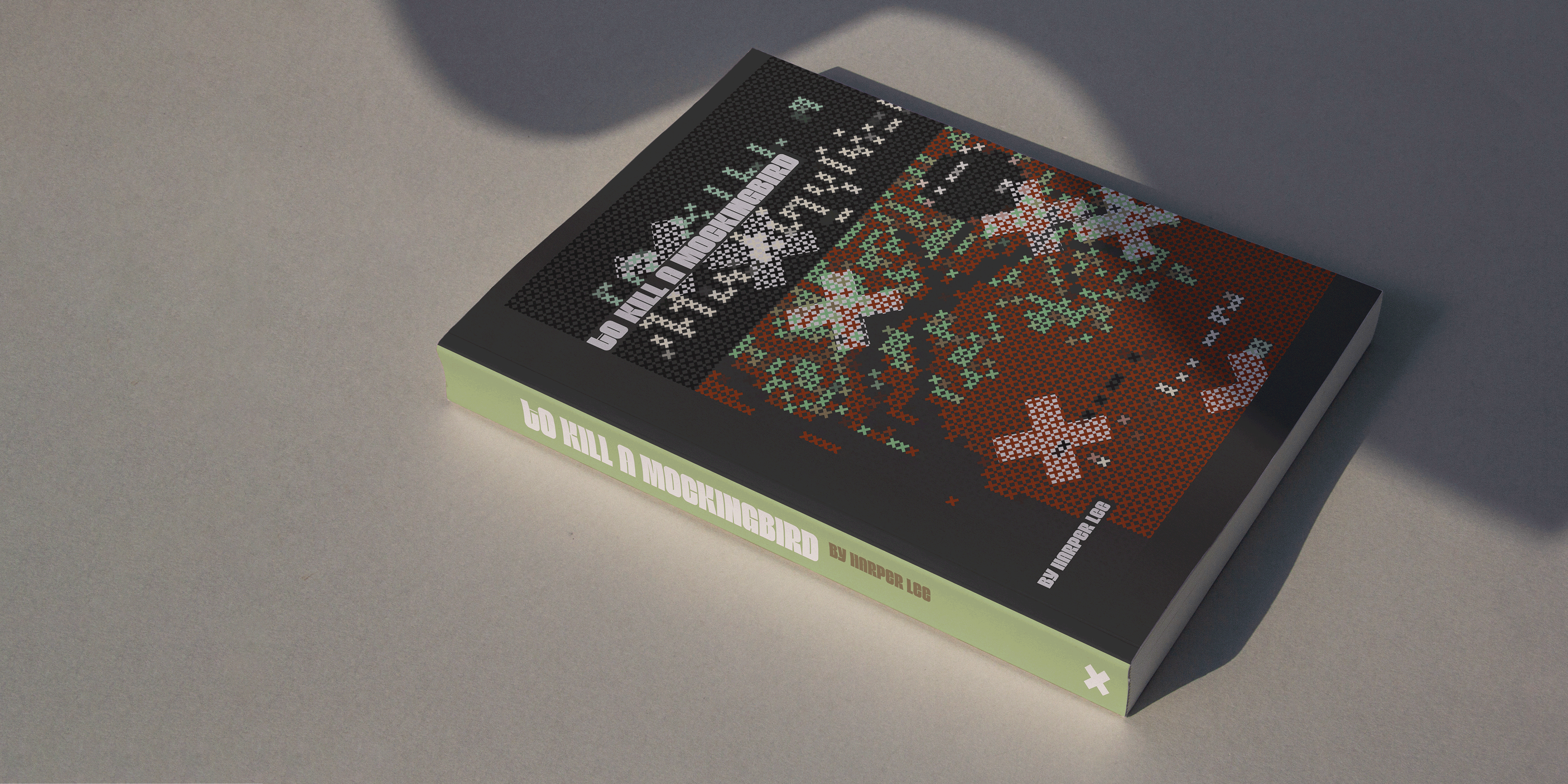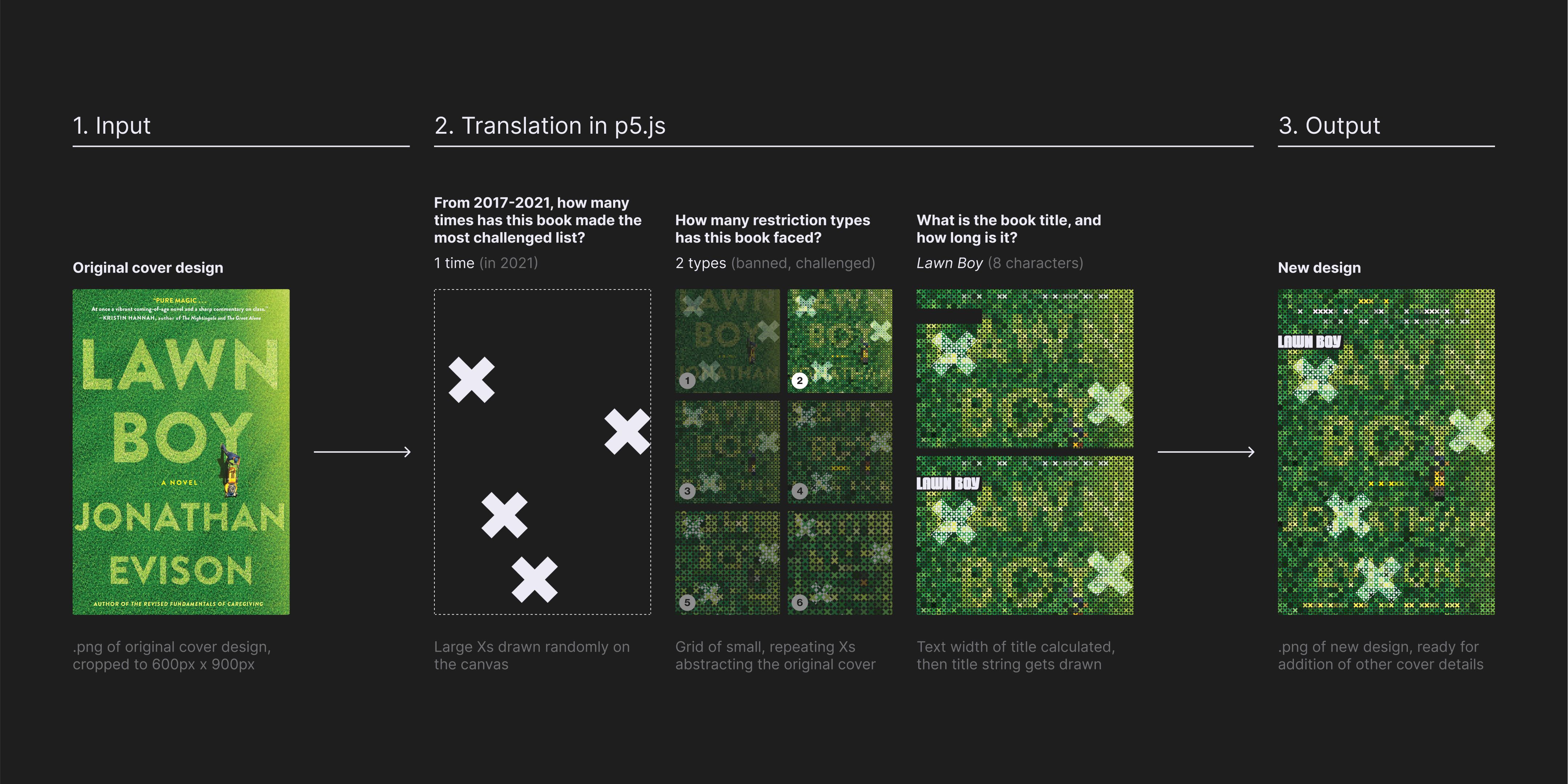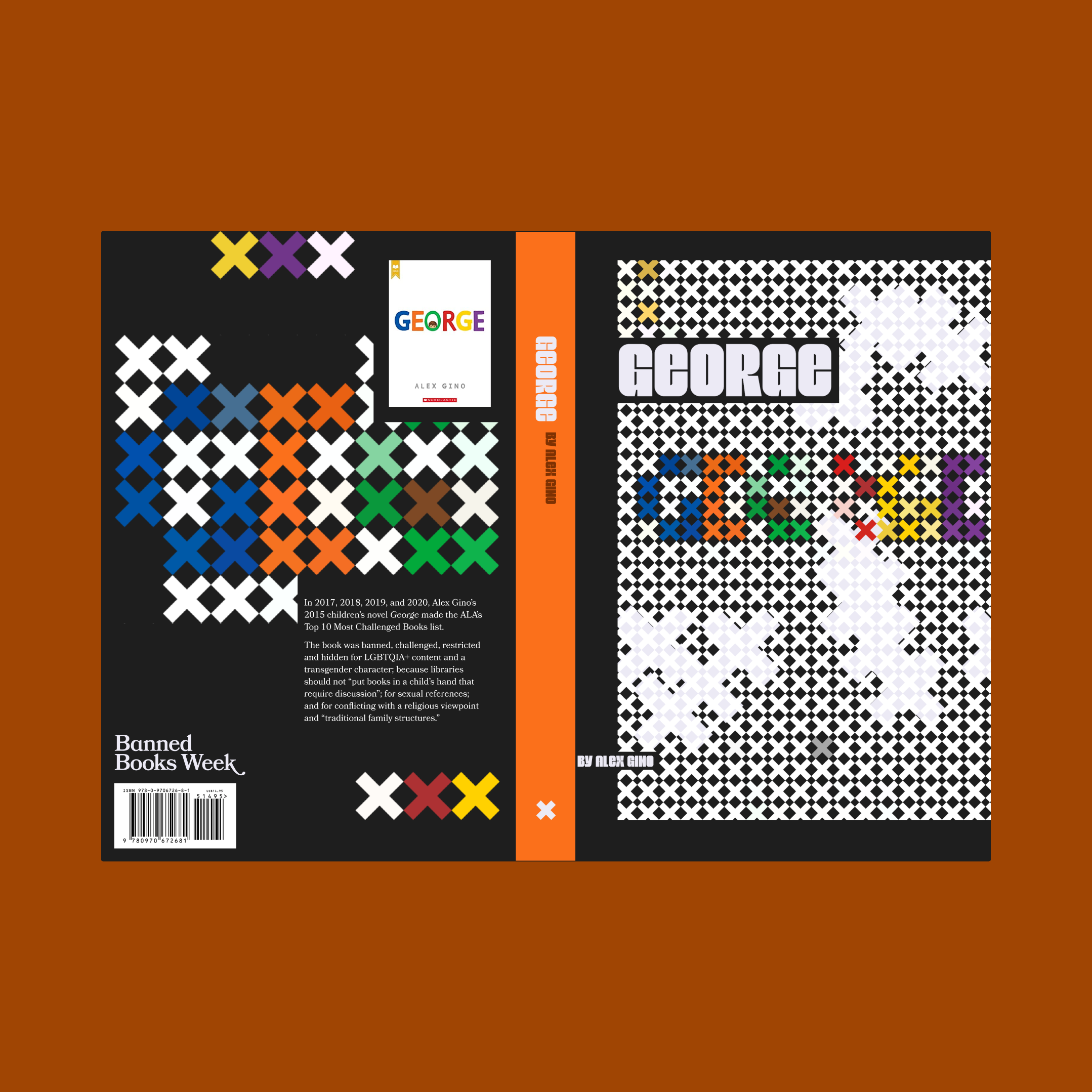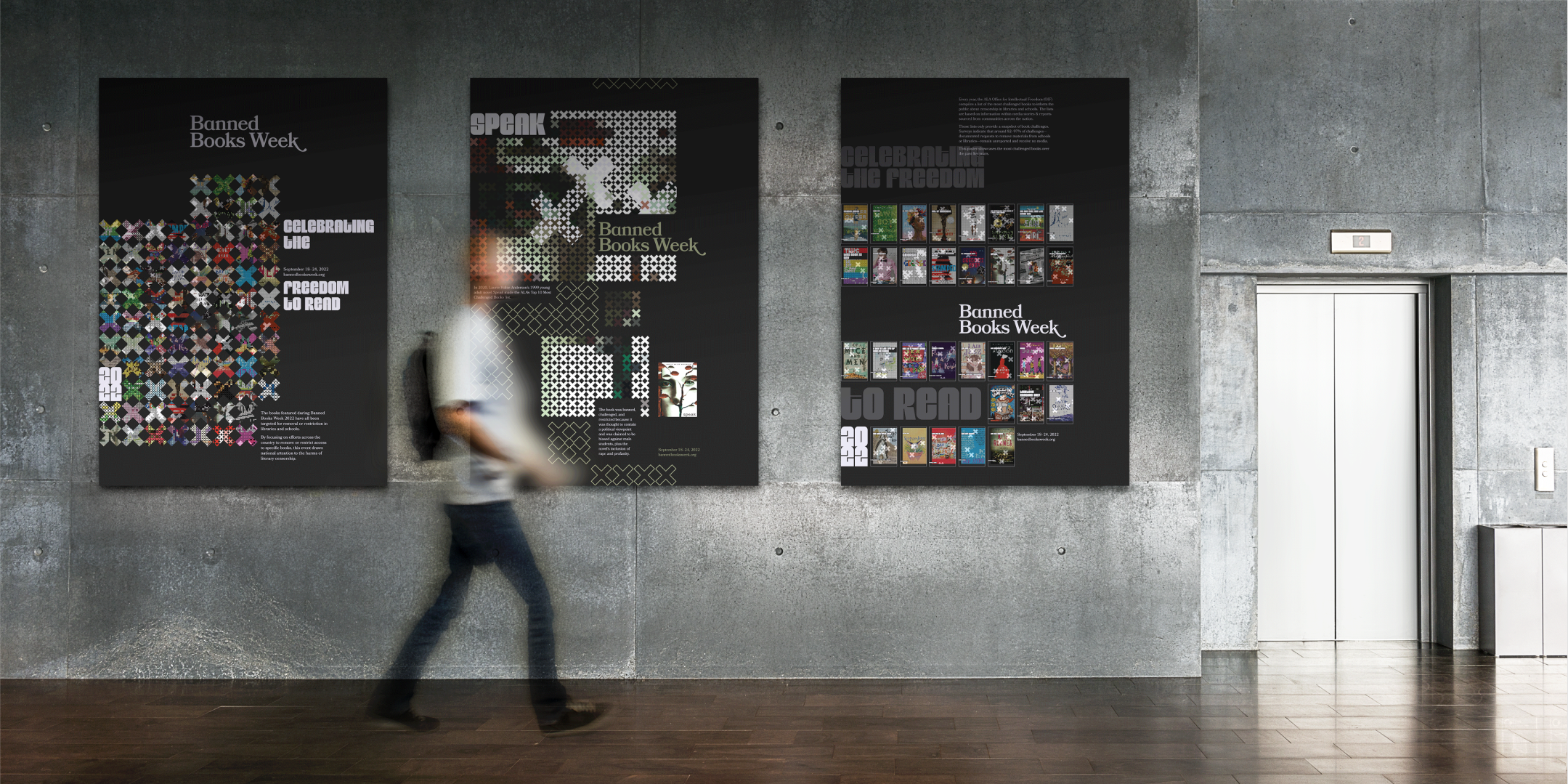Banned Books Week
2022
Challenge
Banned Books Week, hosted by the American Library Association, celebrates the freedom to read. Each year of this event, the Office for Intellectual Freedom compiles a list of the Top 10 Most Challenged Books to inform the public about censorship. The lists are based on media stories and community reports from across the nation.
Banned Books Week, hosted by the American Library Association, celebrates the freedom to read. Each year of this event, the Office for Intellectual Freedom compiles a list of the Top 10 Most Challenged Books to inform the public about censorship. The lists are based on media stories and community reports from across the nation.
Outcome
Over the past five years, 32 unique titles have made the Most Challenged Books list. I designed a limited-edition print series for these titles. Leveraging generative methods revealed opportunities to translate ban data into distinct compositions. To create the new book designs, I coded a p5.js algorithm that modifies each original cover image.





Banned Books Week was launched in response to a surge of challenges to books in schools, bookstores, and libraries.
Held during the last week of September, Banned Books Week advocates for the value of free and open access to information. This event brings together the entire book community in support of the freedom to seek and express ideas, even those some consider unorthodox or unpopular.
I began by collecting visual references of the event across physical and digital spaces. It was fascinating to explore how librarians conveyed what Banned Books Week stands for, establishing a forum for open dialogue as to why specific titles have faced scrutiny.
I began by collecting visual references of the event across physical and digital spaces. It was fascinating to explore how librarians conveyed what Banned Books Week stands for, establishing a forum for open dialogue as to why specific titles have faced scrutiny.

I sought to continue the momentum and craft an identity that spotlights what this week stands for: the freedom to read.
I designed a generative system that applies an image-modifying algorithm to each original cover design for the 32 most challenged books. The system’s mechanisms include content variation, repetition, and scaling.
The more challenges a book has faced, the more abstracted its cover becomes in the new design—alluding to themes of censorship and redaction. Pre-defined constants build cohesion across the series, such as the Banned Books Week wordmark, styling of secondary type, and underlying grid.
The more challenges a book has faced, the more abstracted its cover becomes in the new design—alluding to themes of censorship and redaction. Pre-defined constants build cohesion across the series, such as the Banned Books Week wordmark, styling of secondary type, and underlying grid.










